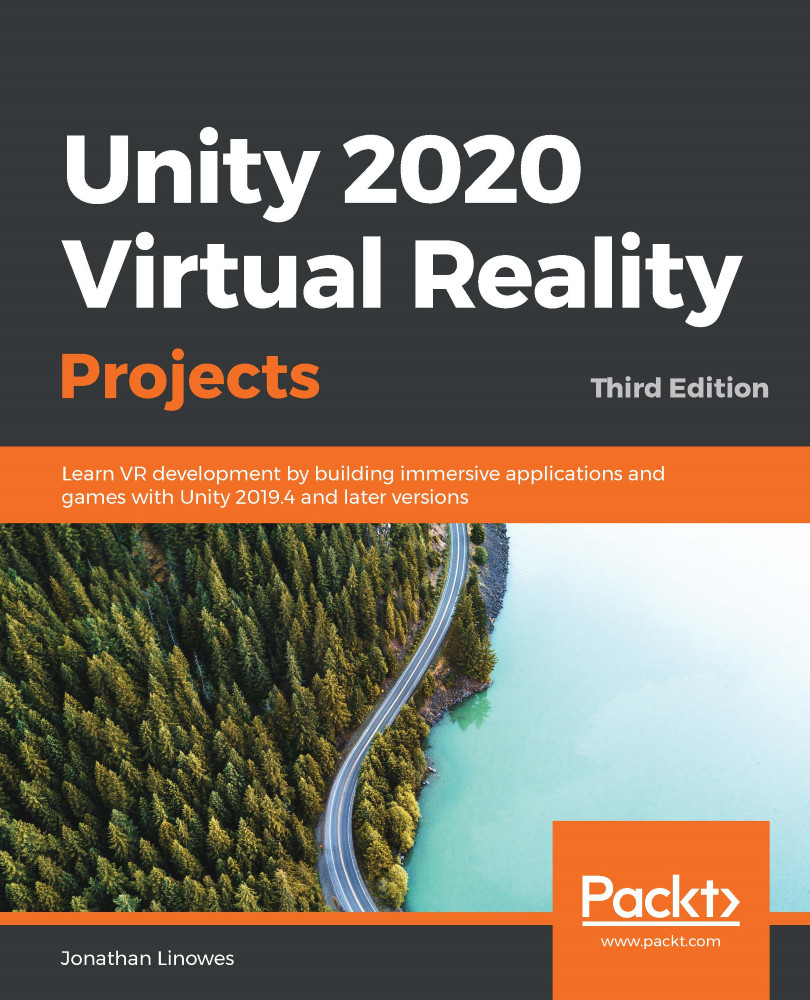We've used Unity Physics and Rigidbodies already in some of the prior chapters. Here, we'll dive a little deeper.In this chapter, we will use physics and other Unity features to build variations of an interactive ball game, including headshots, paddleball, and a rhythm beat game. Along the way, we will explore managing object lifetimes, Rigidbody physics, particle effects, and adding sound effects and music to your projects. We'll also continue to gain experience with C# scripting, Unity's application programming interface (API), and events. In this chapter, you will learn about the following topics:
- The Unity Physics engine, Rigidbody components, and Physic Materials
- Using velocity and gravity to make bouncy balls
- Managing object lifetimes and object pooling to avoid Garbage Collection (GC)
- Hitting balls with your head and your...


